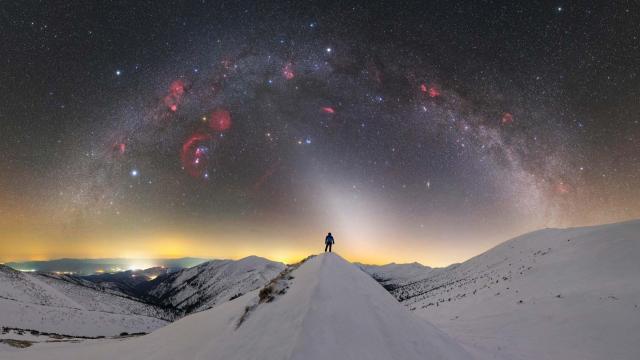On a clear night, it’s possible to see our entire galactic neighbourhood from Earth. You need the right conditions: very little light (which is why so few stars are visible in cities), and it’s ideal to be high up, so that there’s not much atmosphere getting in the way of your view. Recently, 25 photographers from 12 countries took their own portraits of the Milky Way, from some of the most picturesque places around the world. Their breathtaking images are part of the Capture the Atlas 2022 Milky Way Photographer of the Year project.
“Milky Way Arch in the Morning Hours of Spring”

This image was captured around 4 a.m. on the Canary Islands of Spain. The Milky Way is a cloudy arc stretching across the sky; in the bottom right, a smudge of orange and green light from Earth’s airglow hint at the coming day.
“Egyptian Nights”
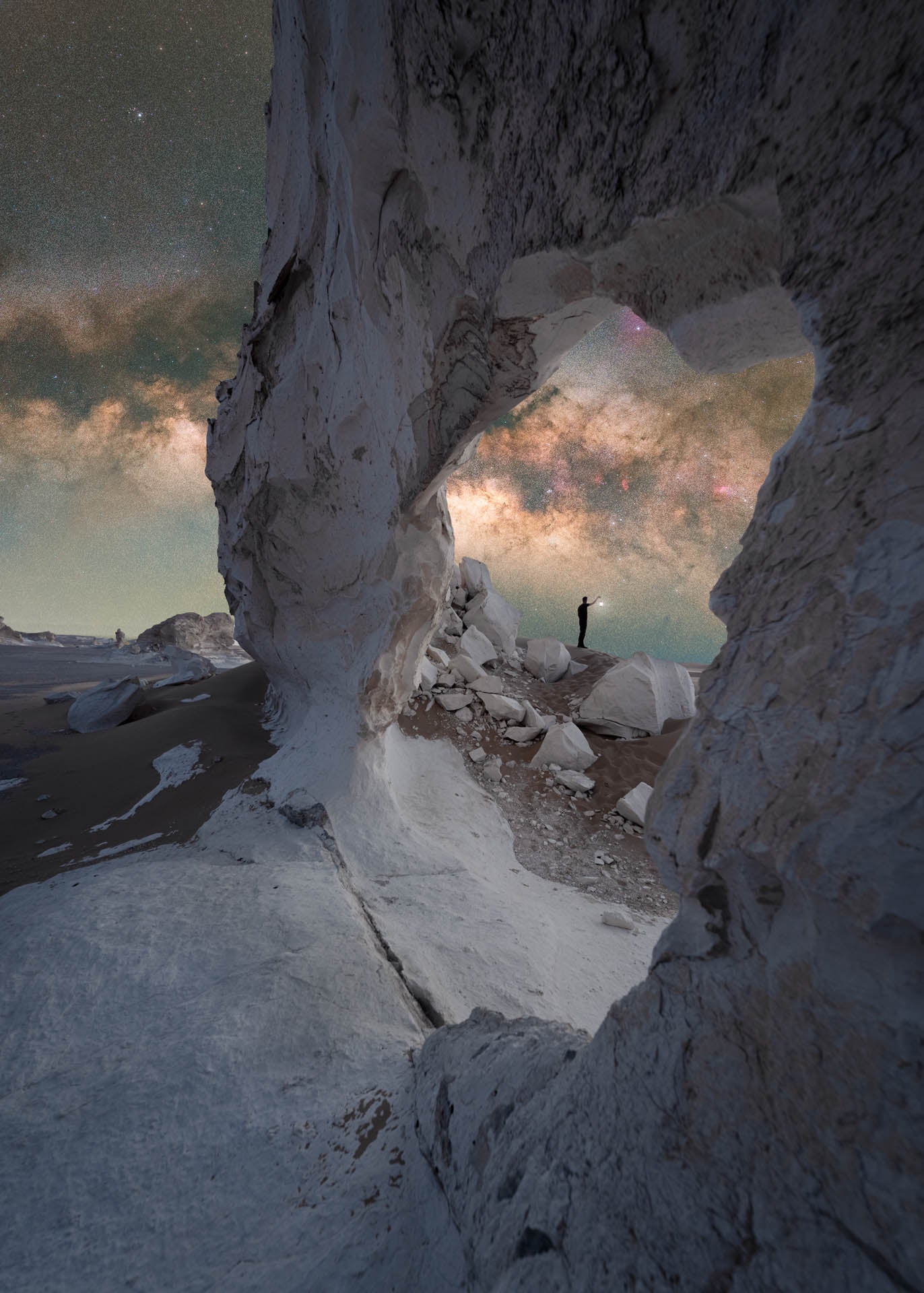
In western Egypt, there are a couple contrasting deserts. The black desert is so-named for its erosion-derived basalt, while the white desert’s calcium, quartz crystals, and limestone lend the land its chalky constitution. The desert’s winds also create interesting rock formations in the white desert, like this arch in the foreground of the Milky Way.
“House of Lavender”
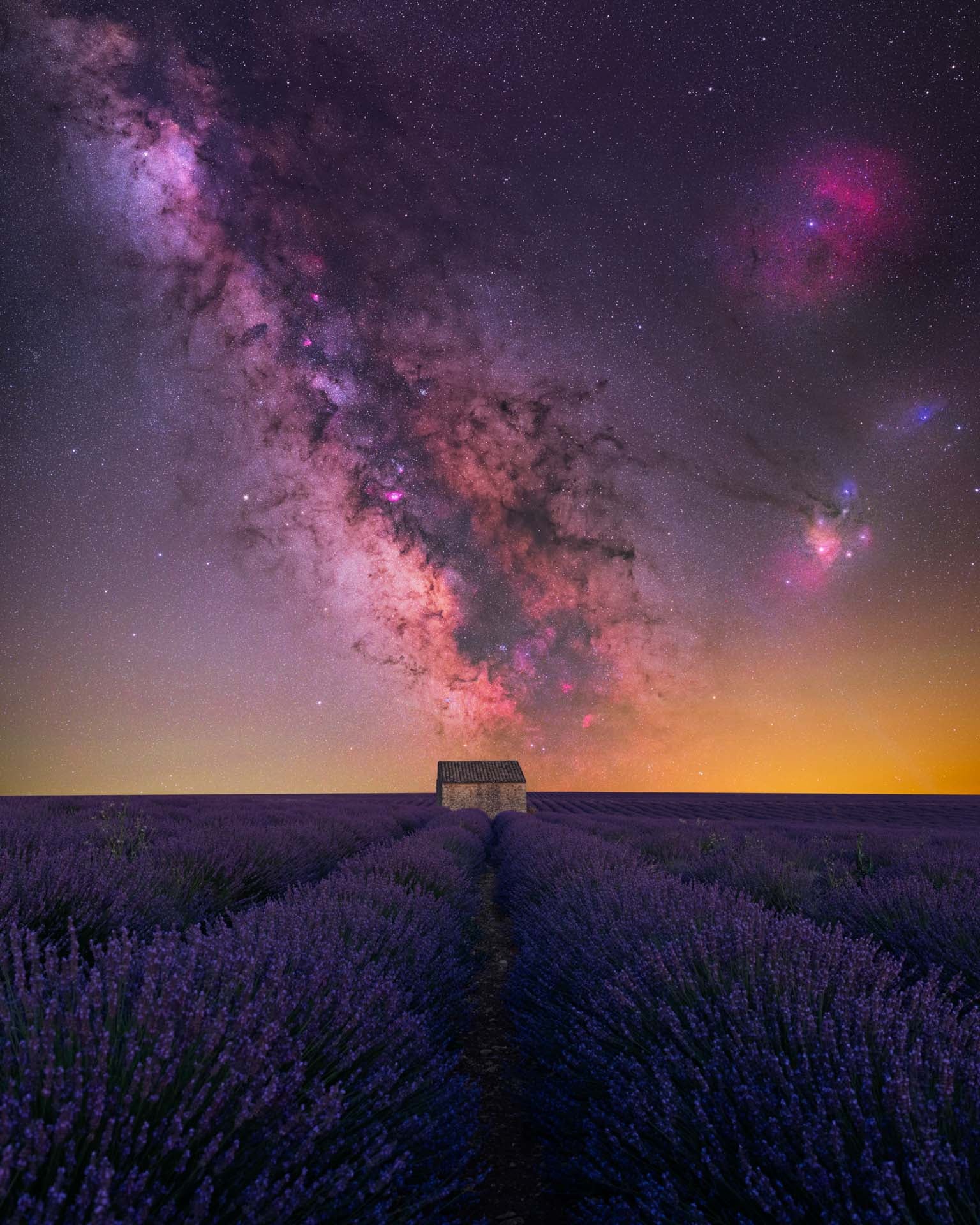
A lone house sits below the Milky Way in this vivid photograph from France. All around the building are fields of purple lavender, which mirror the deep purples and brighter pinks of the sky above. “The smell and atmosphere of these lavender fields are unreal,” said photographer Benjamin Barakat, to Capture the Atlas, adding that “standing there among them in the middle of the night is blissful.” It certainly looks it.
“Ice Age”
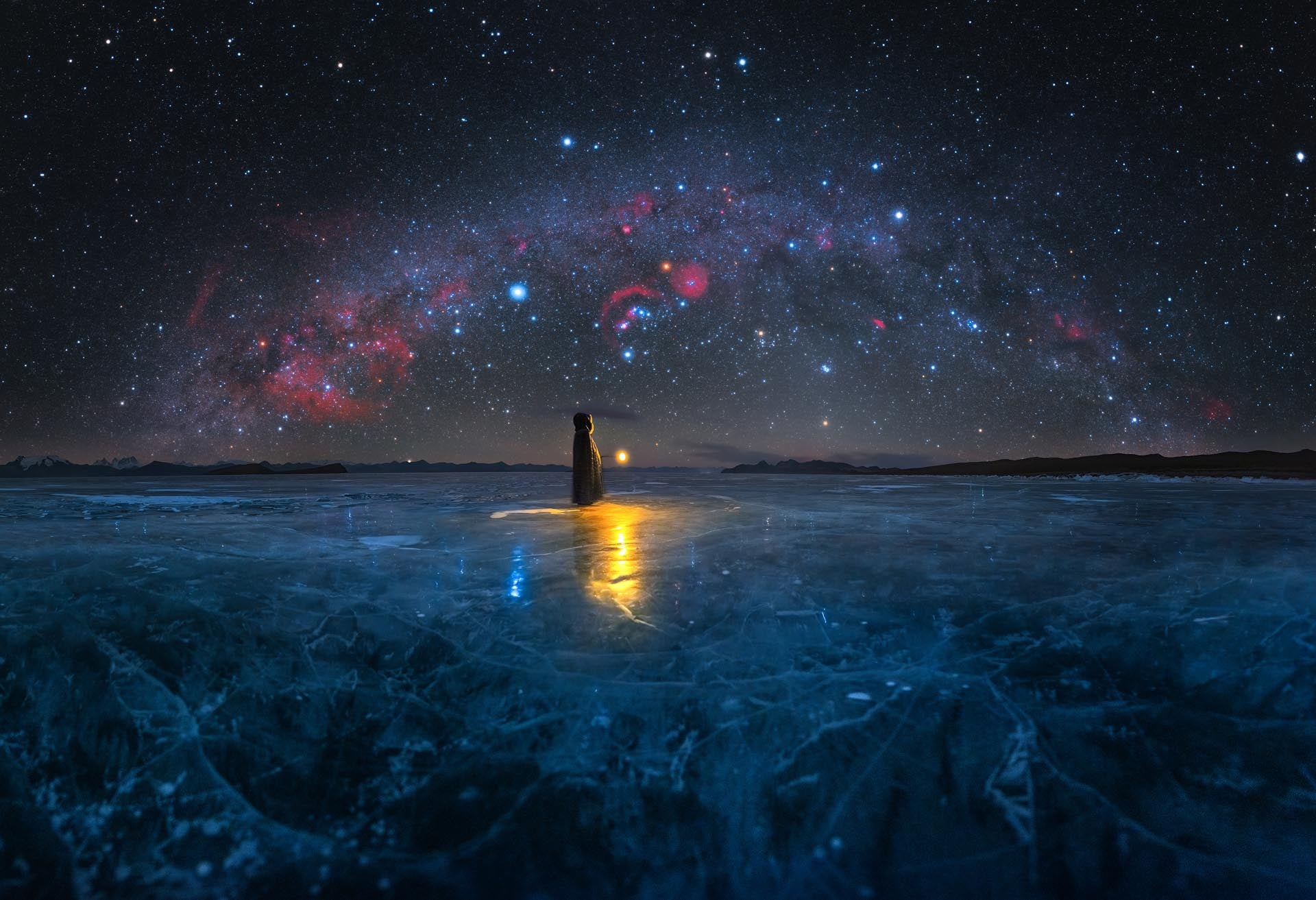
This stunning photo captures the Milky Way over a frozen blue ice lake in Tibet. The lake sits about 5,059.68 m above sea level, making it fantastic vista for seeing the cosmos. Of all the photos of our galaxy, this might be the most otherworldly.
“Perseid Meteor Shower on Mangart Saddle”
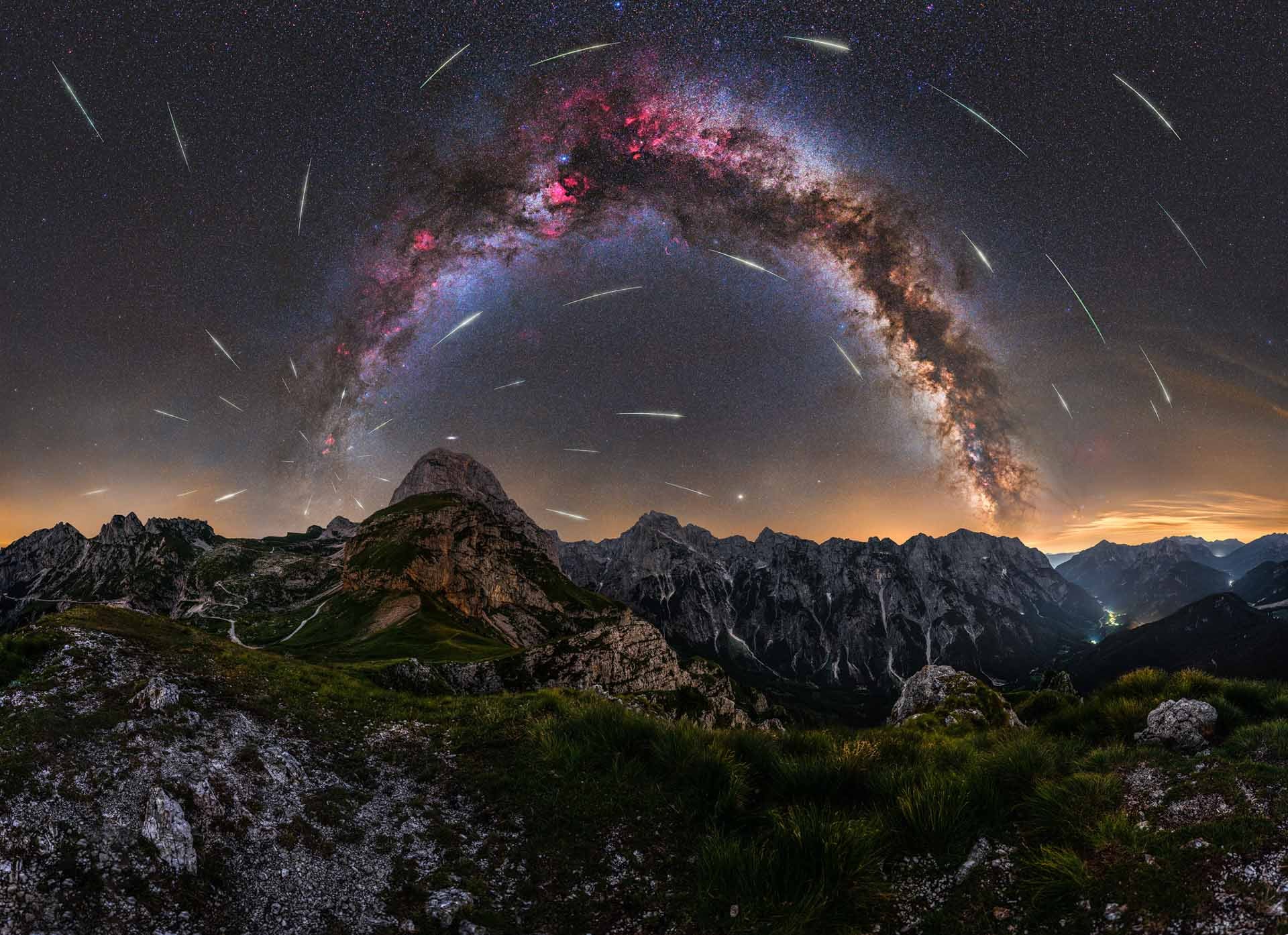
The Mangart Saddle is a mountain pass in the Julian Alps on the border of Italy and Slovenia. Last year, the photographer scaled the saddle to image the Milky Way and ended up capturing the streaks of some of the Perseid meteor shower which peaked last summer. The resulting image is breathtaking and dynamic: the lofty escarpments of the alps are dwarfed by the galactic arch, and the Perseids give a sense of depth lacking in other shots of the Milky Way.
“Lightning the Milky Way”
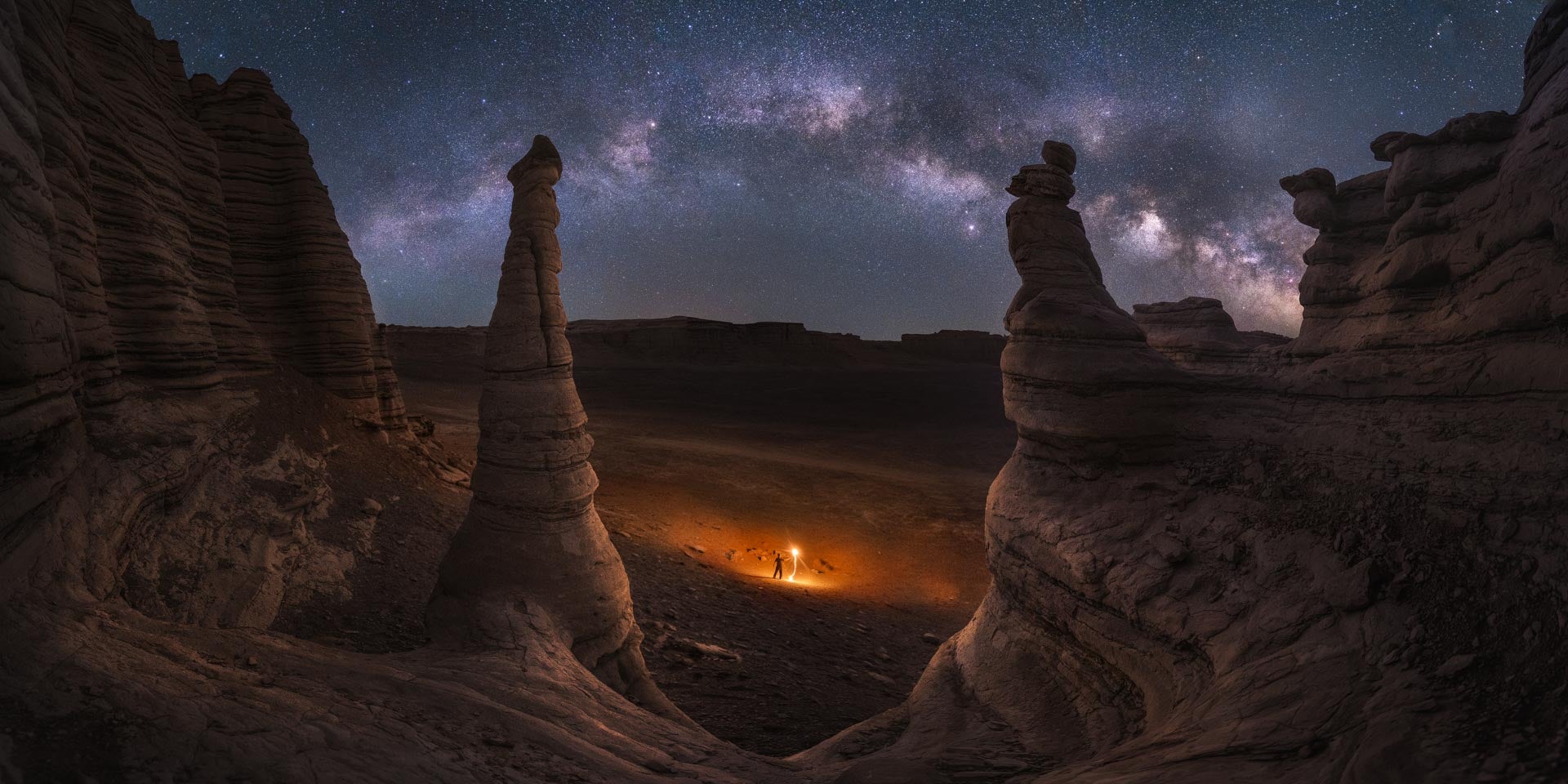
This photo was taken in the Dahaidao Desert in Xinjiang, China. Winds in the desert caused the erosion that created the otherworldly rock formations you see. The Milky Way’s placement on the tips of two of the rock pillars make it almost appear to be sparked into existence from the rock formation itself.
“Mt. Fuji and the Milky Way Over Lake Kawaguchi”

One of the few photos in the Capture the Atlas project to include a significant human presence, this photo shows the Milky Way over Yamanashi Prefecture in Japan. Mt. Fuji rises from the early morning haze on the right.
“Path to the Past”
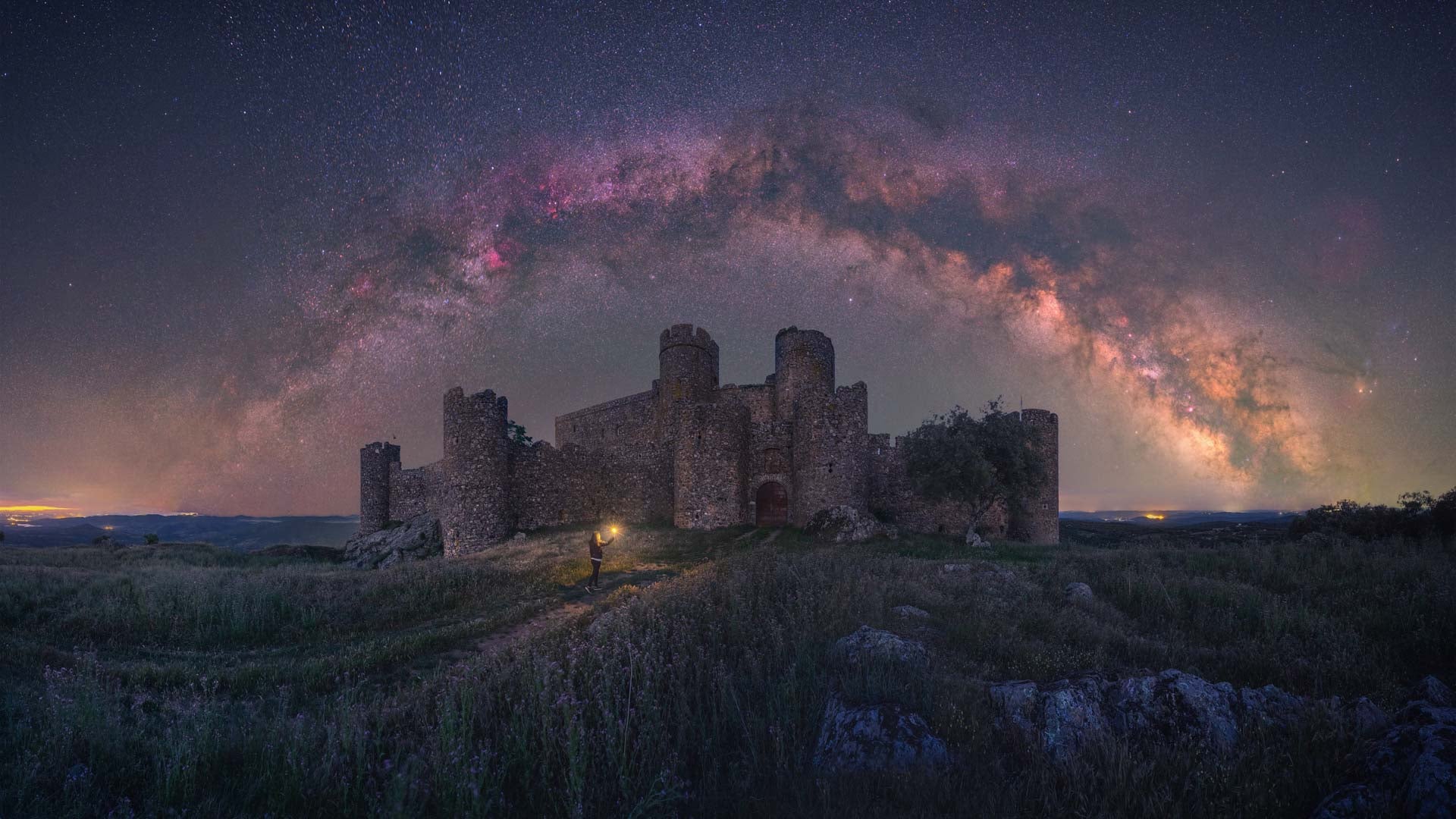
In this fantastical photo, a 16th-century Spanish castle is squarely under the arch of the Milky Way. The castle is in Extremadura, a region of western Spain. The best view is the massive structure above the castle, far more ancient than anything Earth has to offer.
“The Rocks”
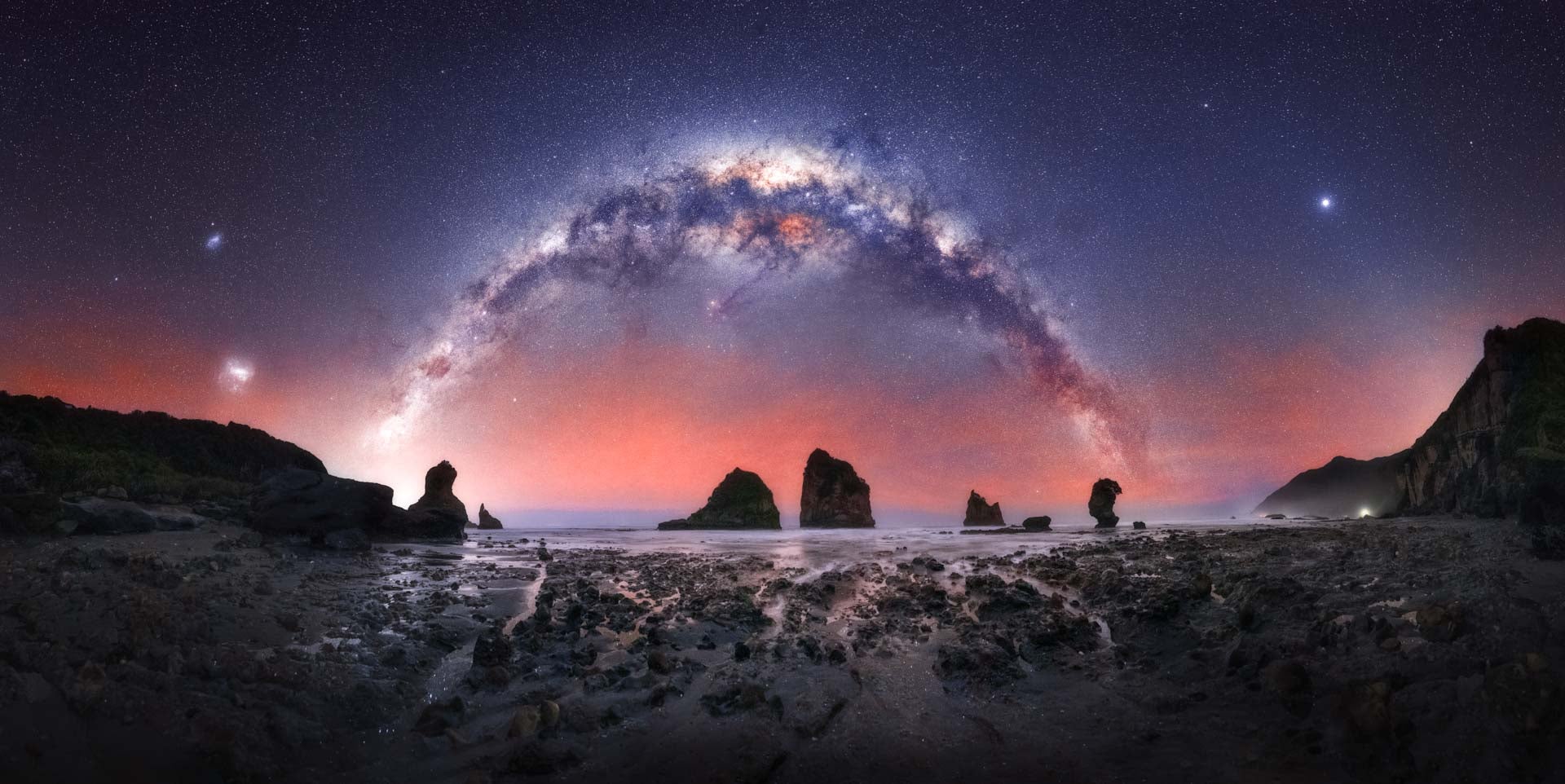
You’d be forgiven if you thought this shot came from some artwork in a laser tag arena from the 1980s. In this photograph, the Milky Way forms an extreme half-halo over Motukiekie, the western coast of New Zealand’s South Island. It silhouettes the sea stacks and reefs along the coast.
“Starlit Needle”
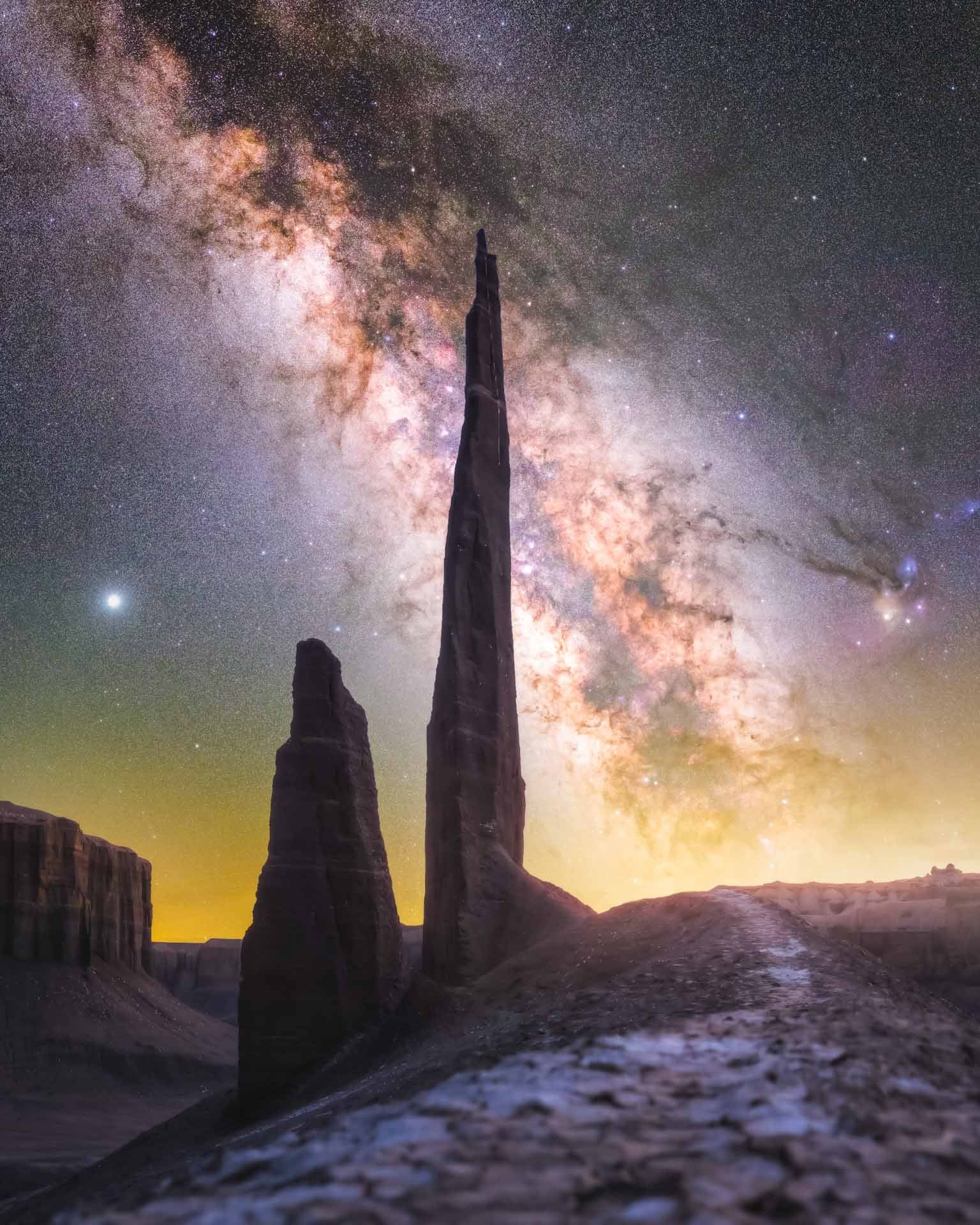
Photographer Spencer Welling captured this alien view of a rock formation silhouetted by the Milky Way near Hanksville, Utah. Utah is peppered with such strange rocks, hewn from millions of years of erosion and other geological processes. “On clear, moonless nights, the stars shine bright enough to cast perceptible shadows on the ground, as they did on this night when I was standing below the Needle,” Welling told Capture the Atlas. Just wow.
“The Milky Way Arching Over the Pinnacles Desert”
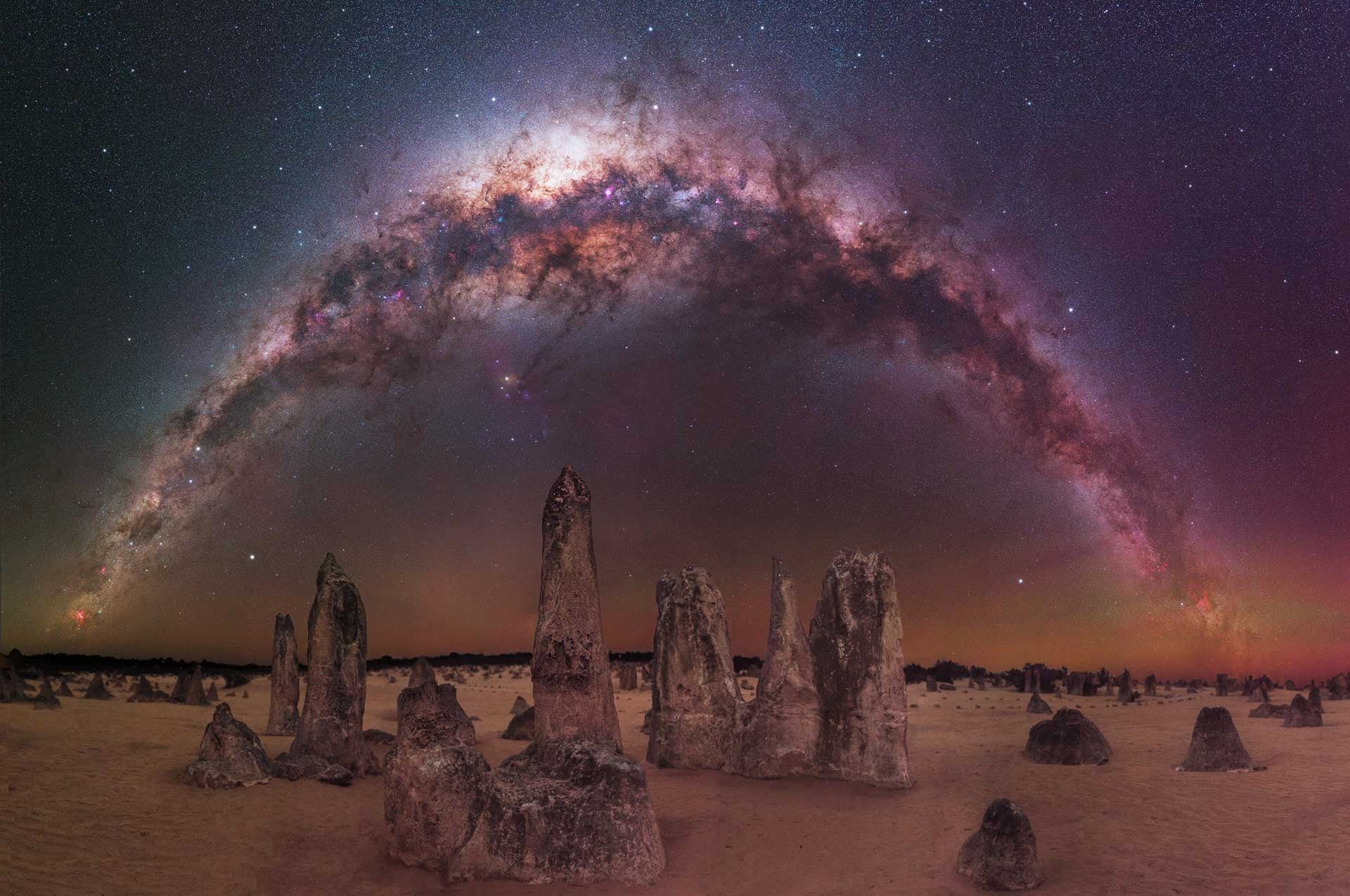
You may be noticing a particular theme at this point: terrestrial structures framed by the arc of our galaxy’s cross-section. Earth is 27,000 light-years from the galactic core, which is roughly in the middle of the arc we see from here. That means what we see of the galaxy is across its disc, which in panoramic photos is bent into an arc. It makes for great framing for astrophotographers, as was the case here: upright limestones in Australia’s Nambung National Park seem totemic — almost mystical — under the twinkling lights of the galaxy.
“The Salt Road”
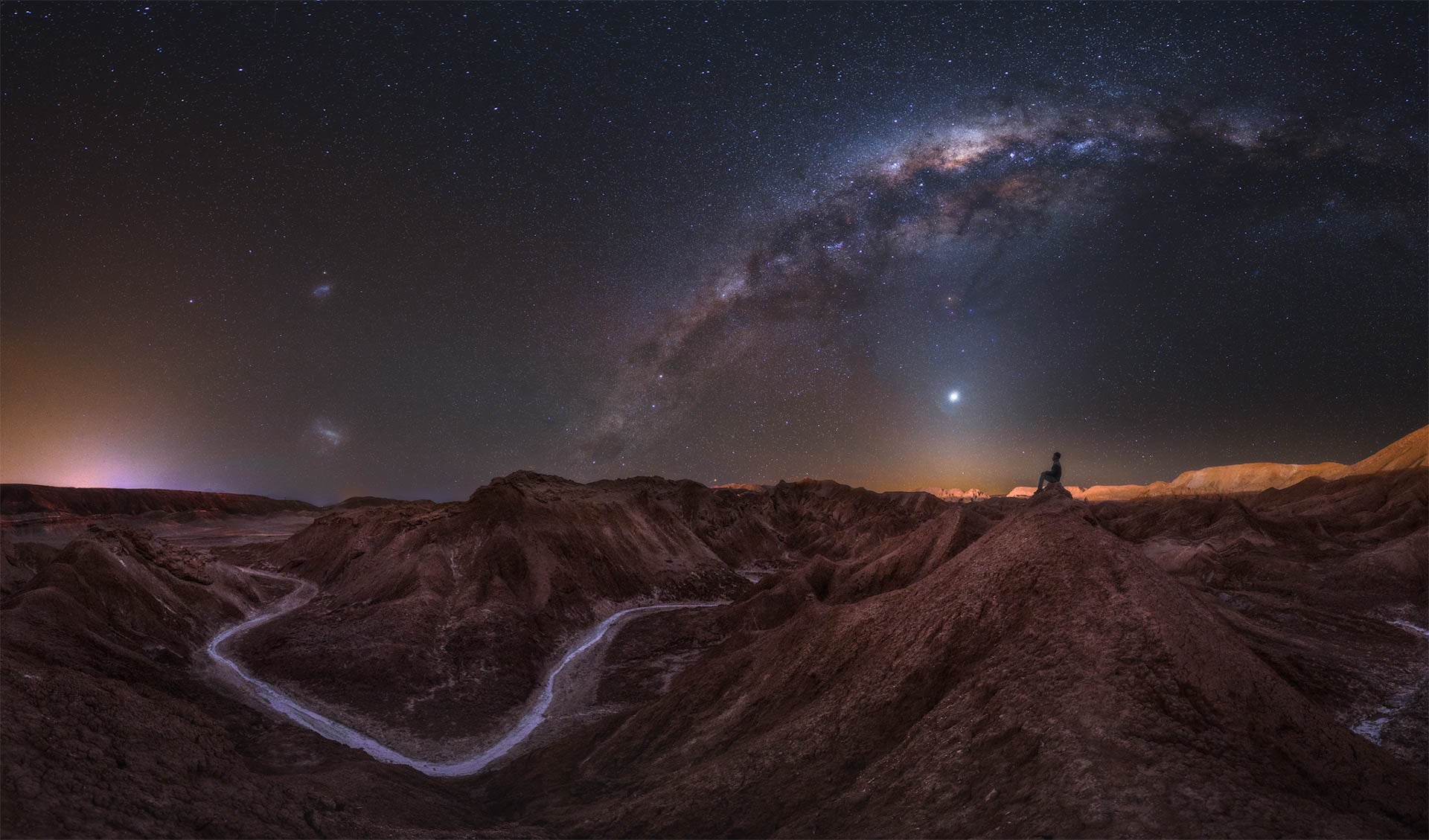
Chile’s Atacama Desert is famous for its clear views of the night sky; that’s why so many telescopes (as well as the largest digital camera ever built) are set up there. This photo captures the loneliness of the Atacama under cover of night, with a winding road through the desert’s rocky reaches mirroring the linear structure of the Milky Way as seen from Earth.
“Galactic Kiwi”
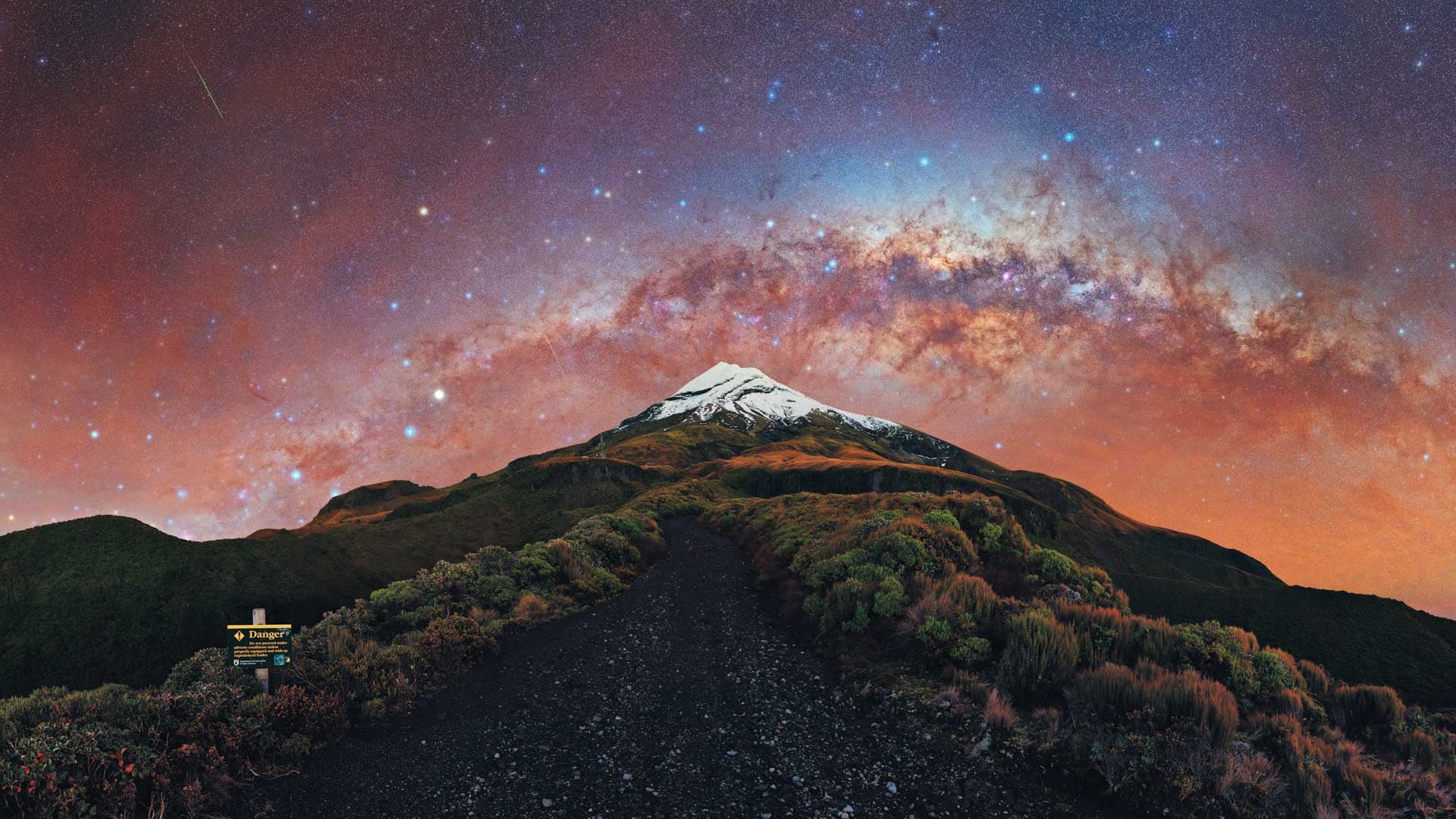
This twilight shot of the Milky Way captures the galaxy in the background of New Zealand’s Mount Taranaki. Capped in snow, the mountain’s peak offers a central vanishing point; a place where the earthly greens and browns converge on the galaxy’s interstellar oranges, pinks, and further up, deep blues. A meteor’s streak across the sky is visible in the top left corner of the photo.
“Secret”
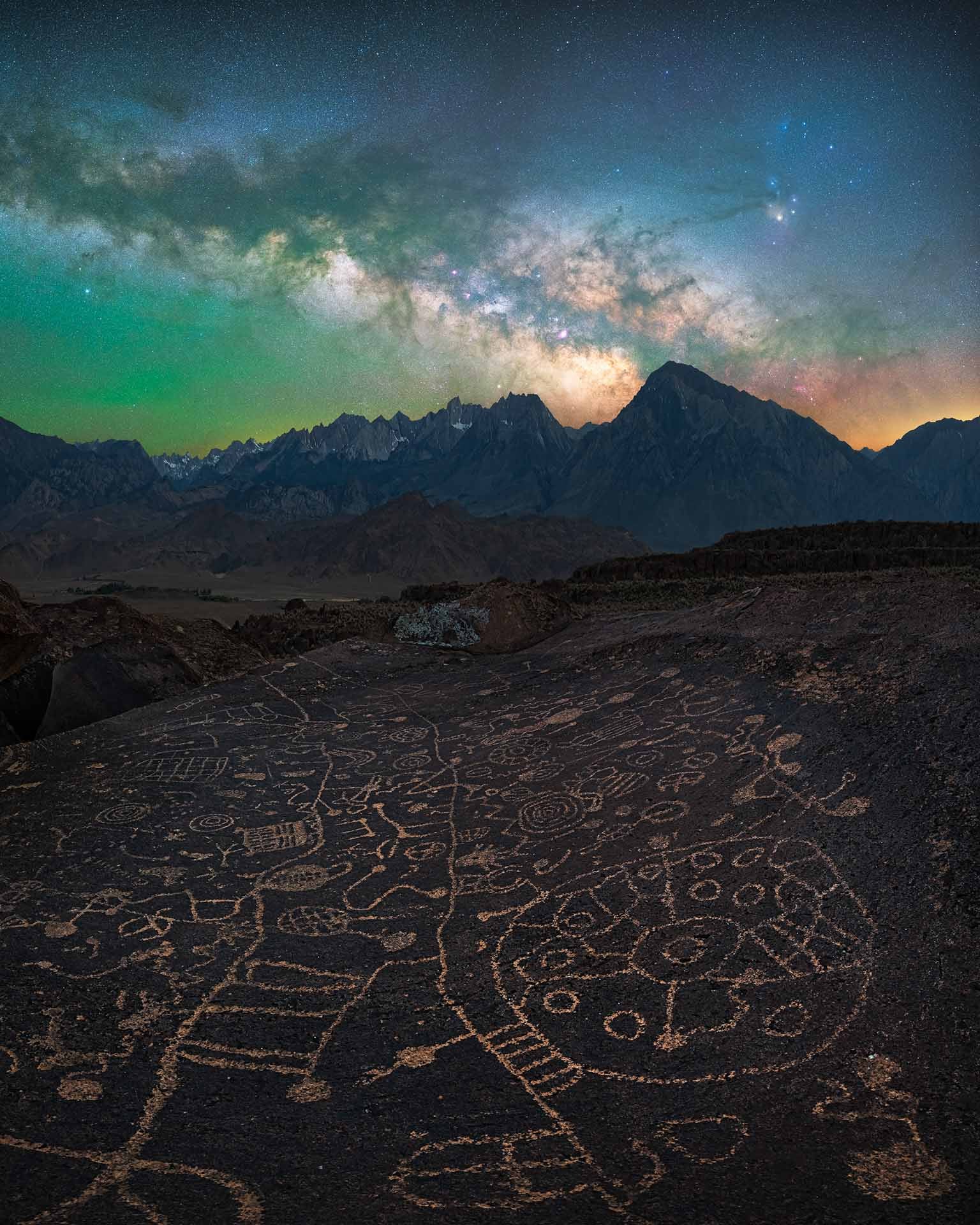
This image shows Native American petroglyphs etched in volcanic rock in Eastern California. The Sierra Nevada Mountains are in the background and create a separation between the petroglyphs’ abstractions and the Milky Way’s diverse colour gradient. The photo is basically the spitting image of wonder: it makes one (at least this writer) ponder how humanity’s relationship with the night sky has changed over the millennia.
“Winter Sky Over the Mountains”
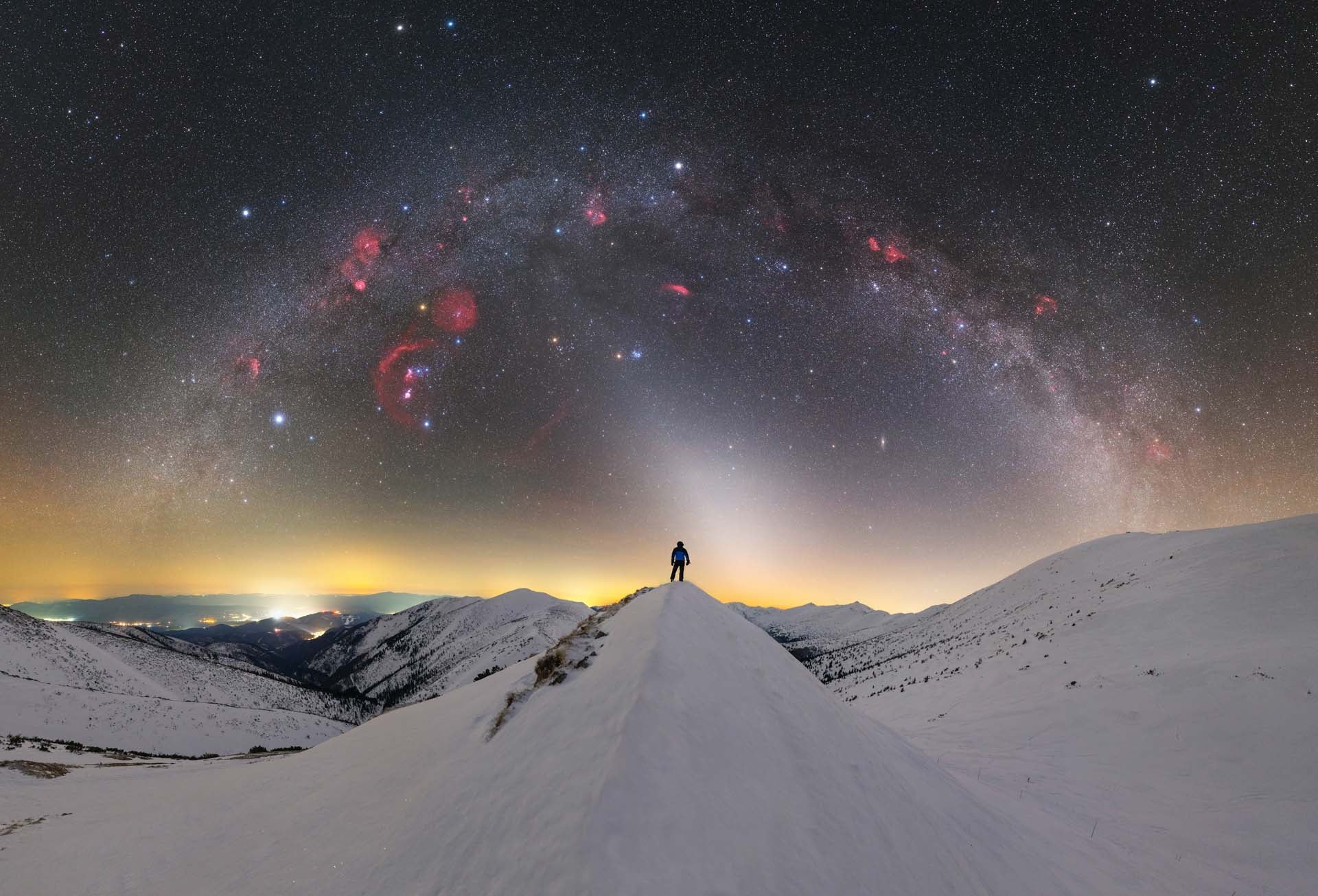
A view of the galaxy from the Low Tatras mountains in Slovakia. This is a self-portrait: the photographer stands silhouetted at centre. The Milky Way is speckled with pinkish reds because a special filter was used on the camera to emphasise hydrogen-alpha nebulae in the galaxy, which are normally invisible to the naked eye. If any image in this slideshow were a movie poster, this would be the one.
